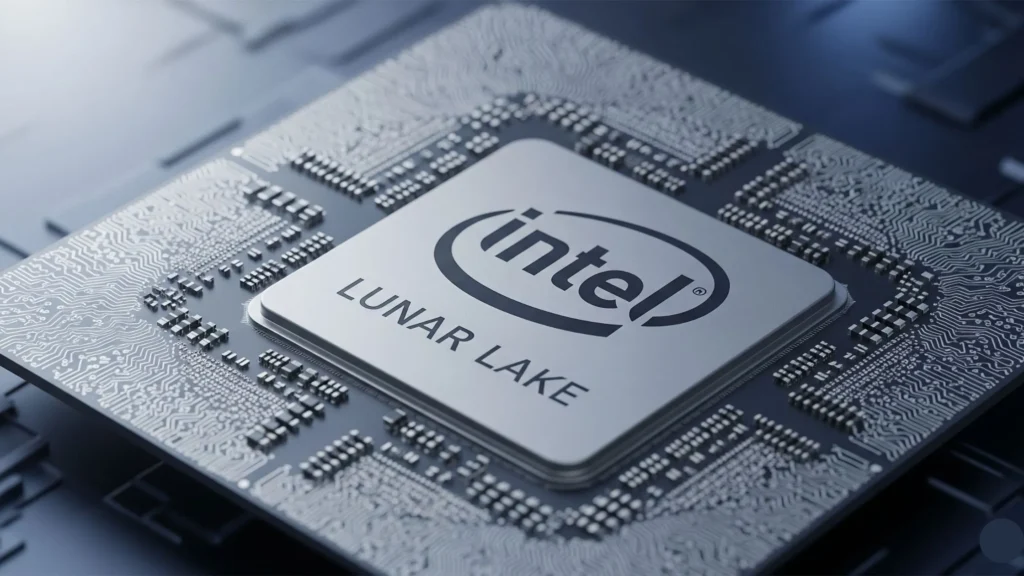Intel Lunar Lake: A Game-Changing Leap for AI PCs in 2025
Intel is rewriting the rules for thin-and-light laptops with the launch of its Lunar Lake platform—an AI-centric processor architecture built from the ground up to power the next wave of Copilot+ PCs and AI-driven workflows. Announced at Computex 2024 and expected to debut in consumer devices in late 2025, Lunar Lake represents a massive leap in performance, battery life, and AI capabilities.
With AMD and Qualcomm heating up the competition, Lunar Lake is Intel’s boldest effort yet to stay ahead in the era of on-device AI computing.
🌙 What is Lunar Lake?
Lunar Lake is Intel’s next-generation CPU architecture, following Meteor Lake and Arrow Lake. It’s designed exclusively for ultra-thin laptops and Copilot+ PCs, emphasizing AI acceleration, efficiency, and graphics performance. It also marks Intel’s biggest architectural overhaul in years.
Unlike traditional designs, Lunar Lake integrates the CPU, GPU, NPU, and memory on a single system-on-chip (SoC), enabling:
- Massive power savings
- Ultra-low latency AI processing
- Fanless, compact form factors
⚙️ Key Specs and Features
- Built-in AI Engine (NPU 4)
- Delivers 45+ TOPS (trillion operations per second) of AI performance
- Powers features like Recall, Live Captions, Cocreator, and more in Microsoft Copilot+
- Handles local generative AI workloads
- New Lion Cove Performance Cores & Skymont Efficiency Cores
- Up to 8 cores (4 performance + 4 efficiency)
- Significant IPC gains and lower power draw
- More efficient multitasking and responsiveness
- Intel Xe2 GPU (Battlemage)
- Up to 60% better graphics vs Meteor Lake
- Optimized for AI workloads like photo/video enhancement and AI rendering
- Integrated LPDDR5X Memory (On-Package RAM)
- Up to 32GB built directly on the chip
- Enables faster memory access and thinner laptop designs
- Extremely power efficient
- Intel Thread Director 2.0
- Improved scheduling across P-cores, E-cores, and NPU
- Balances workloads dynamically for top-tier battery life
💡 Built for AI-First Experiences
Lunar Lake is Intel’s answer to the on-device AI revolution spearheaded by Microsoft Copilot+. With its powerful AI NPU, users will benefit from:
- Local execution of AI models like GPT, Stable Diffusion, and LLMs
- Smarter background tasks (noise suppression, super resolution)
- Reduced dependency on the cloud for AI processing
- Enhanced privacy and responsiveness
It also supports DirectML, ONNX Runtime, and OpenVINO, allowing developers to build and run AI apps natively.
📦 Lunar Lake vs The Competition
| Feature | Intel Lunar Lake | AMD Ryzen AI 300 | Snapdragon X Elite |
|---|---|---|---|
| CPU Architecture | Lion Cove + Skymont | Zen 5 | Custom Oryon |
| NPU Performance | 45+ TOPS | 50 TOPS | 45 TOPS |
| RAM | On-Package LPDDR5X | LPDDR5X | LPDDR5X |
| AI Software Support | Copilot+, OpenVINO | Copilot+, ONNX | Copilot+, Windows AI |
| Target Devices | Thin & Light PCs | Premium Laptops | Copilot+ ARM PCs |
Lunar Lake is Intel’s most competitive response yet, especially when it comes to AI performance per watt, integrated memory, and overall system balance.
🖥️ When and Where to Expect It
Intel Lunar Lake-powered laptops are expected to launch in Q4 2025, just ahead of the holiday season. Major brands like:
- Acer
- Lenovo
- HP
- Dell
- ASUS
are likely to feature Lunar Lake in their Copilot+ offerings, optimized for battery life, AI apps, and cloud-enhanced productivity.
🔮 Final Thoughts
Lunar Lake is more than just Intel’s next CPU—it’s a transformative platform for AI-first PCs. With cutting-edge architecture, powerful integrated graphics, and a dedicated AI engine, Intel is poised to deliver high-efficiency, high-performance laptops that don’t just run faster—they run smarter.
As AI becomes essential to everyday computing, Intel Lunar Lake will be at the heart of the most intelligent, responsive laptops we’ve ever used.



